The first time I fished a proper euro nymph rod was one of those “ah-ha” moments, like the first time you switched from cotton to wool socks, or how you felt a few hours into owning a smartphone following years of utter refusal.
What have I been missing?
After months of attempting to apply tight-line techniques to my normal trout gear, I relented and picked up a Cortland Competition Nymph rod based on a buddy’s recommendation. It was like someone flicked a switch, and I immediately began to feel more strikes and fish more effectively. I explored the streambed in new tactile ways, and was learning water at an accelerated pace. That rod not only enabled me to develop a new set of skills, but also sparked a newfound appreciation for rod design.
Cortland Line Company has been on the scene in various forms for over 100 years. Despite some twists and turns along the way, their latest iteration is cranking out some serious purpose-driven lines and tippets. While countless fly anglers got their start on their Fairplay series of beginner fly outfits, Cortland has never been known for producing great rods. Besides a brief and unsuccessful stint in the rod game after acquiring the original Diamondback Fly rods in the early 2000’s, it wasn’t until Cortland introduced the Competition Nymph series in 2013 that things started to change.
The brainchild of designer Joe Goodspeed (currently of Thomas & Thomas), these rods were loved almost immediately by those who got their hands on them, and came in at a price point that was previously unheard of. This started Cortland's foray into the tight-line niche and opened them up to the international competitive fly fishing market as an affordable, yet quality option. Under the direction of John Wilson, who took over as president in 2015, Cortland has continued to play to their strengths as a line company, while also offering a small selection of specialized rods, including the newly released MKII Competition Nymph series (an upgraded version of the original), as well as the Lake series of rods that are inspired by fishing in the Finger Lakes region of New York where Cortland resides.
What works
Price
Coming in at $250 MSRP, Cortland’s Competition Nymph rod is a steal. With most tight-line offerings starting at $700 or more, this rod opens the world of euro nymphing to many of us who could not otherwise afford to dabble. While other affordable options are now on the market, such as the Echo Shadow II, Syndicate P2, and the Redington Hydrogen, Cortland really did start the fire, and despite a growing market, Cortland Competition Nymph rods have remained competitive.
Quality and Versatility
Looking past the plain matte blank and lack of finer detailing, the Competition Nymph rod sacrifices nothing. The rods are well made, look decent, and most importantly, they can fish. I especially like the look and feel of the cork handle. While I initially shrugged off their decision to include a fighting butt on a 3 weight, I found it to be a great feature for balance and playing fish. Paired with Cortland's premium backing, line, indicator mono, tippet rings, and tippet materials, you can think of the rods as part of a system that includes everything but the reel.
Beyond tight-lining, this rod will throw a dry or roll an indicator in a pinch, and actually work pretty great for dead drifting small weighted streamers. The sensitive 10.5’ 3wt is a classic, but the 4wt will give you a bit more versatility.
Balance and Weight
Euro sticks are long, so Cortland designed their rods to be butt-heavy to promote balance and minimize arm and wrist strain. Lacking any frills, the uncoated blank and thin cork handle means a fast action and an extremely light total package. Balanced with the reel, line, and backing, the rod almost floats in your hands.
Strength and Feel
These rods pack some serious flex and punch well above their weight. I’ve pulled a few 18-20 inch trout and countless fat suckers out of some deep holes with the 3wt. Instead of fishing with the fly line, I typically prefer a long mono system based on one of competitive angler Devon Olsen’s formulas. I’ll fish a long section of maxima chameleon with a built in sighter using Cortland’s indicator mono. The rod’s oversized guides are a real benefit for those of us using this style of knotted leader system. Topped off with their ultra premium 5x fluorocarbon at the terminal end, you can really muscle some fish around.

Despite its backbone, the Competition Nymph rod was built with sensitivity in mind. Sporting a super soft and sensitive tip, the rod excels at fly awareness, strike detection, and tippet protection. The rod’s thin, tapered cork handle helps you feel subtle strikes and track flies ticking along the bottom. Place your index finger against the blank as you track the drift and you’ll feel every little rock and the subtlest of strikes.
What doesn’t
Durability
There’s not much I could say that wouldn’t be nitpicking. The problem, if any, is not a Cortland Competition Nymph rod problem, but an issue inherent to any fine tipped rod in a light line weight. As much as I’d like to blame the rod for the broken tip of my 3wt, that one’s all me.
While the lack of coating leads me to question the rod’s durability, I haven’t seen evidence of weakness. That being said, the 3wt simply feels delicate. The 4wt, though negligibly less sensitive, feels a bit more stout. Everything is a tradeoff.
My only real gripe with Cortland’s offering is that the glue around the guides doesn’t seem all that strong. I could see it eventually cracking or stretching under strain or exposure to extreme temperatures.
Final Word
The Cortland competition nymph rod is an excellent choice for the euro dabbler and the competitive angler alike. At a price point that’s almost too good to be true, this is a rod you can fish the hell out of without the anxiety of breaking a more expensive stick. Even if you own pricier rods, it makes a very capable backup or loaner, and you might even find you prefer it. It's a no frills tool that simply performs.
I’ve come to love my 10.5’ 3wt in the year or so that I’ve owned it, and would put it right up there with rods costing three or four times as much. If you’ve been playing around with tight line nymphing at all, do yourself a favor and get a proper nymphing rod. You won’t be disappointed with the Cortland Competition Nymph rod.




















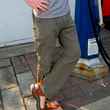

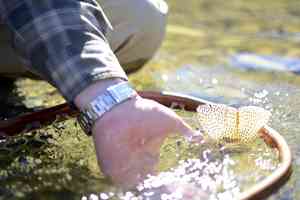
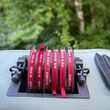

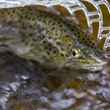
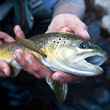



Comments